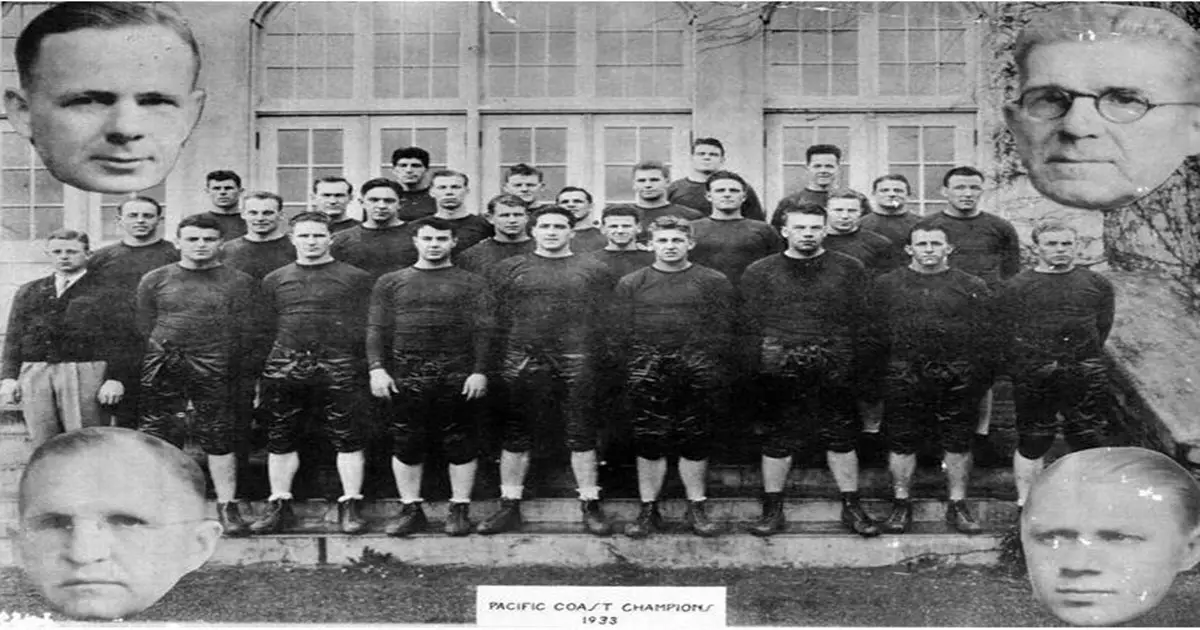Can you imagine your beloved Ducks achieving a 9-1 record, winning a share of the conference championship, finishing the season ranked No. 8, and not going to a bowl? Well, imagine it, because it happened to Oregon’s 1933 team. While 1933 is a way back, this is a piece of Duck football lore everyone should know and be proud of, as this 1933 team was truly outstanding.
The Great Depression saw a very different college sports world, and it was no different for the University of Oregon. The 1933 football season began with spring drills in April, but the team had some interesting distractions as things got rolling.
For example, the Order of the O (Oregon Lettermen) organized a boxing and wrestling match (??) with the help of local wrestling promoter Herb Owens. The boxing matches pitted Duck football players against counterparts from Oregon State. The wrestling event matched Duck athletes against professional athletes like George Christensen, a former Duck All-American who had moved on to the NFL
Unfortunately, on the eve of the event, Oregon State’s graduate manager (Athletic Director) Carl Lobdell refused to allow his athletes to participate. The matches went on with some adjustments but had the NCAA existed at the time, this event would never have happened, Oregon State’s participation notwithstanding.
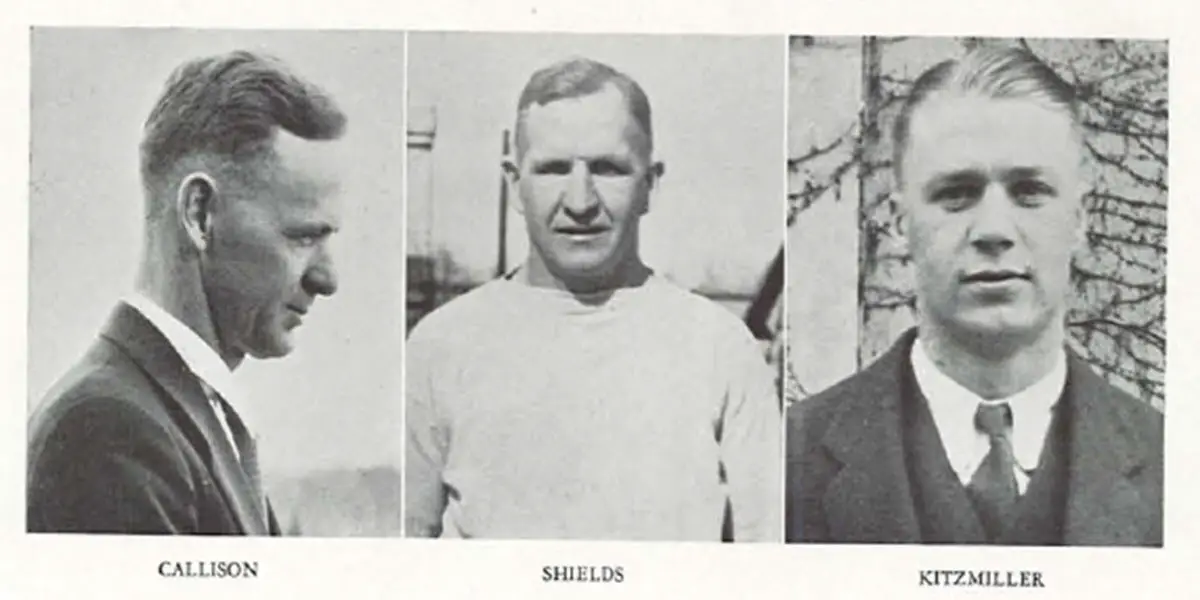
Prink Callison and assistants Eugene Shields and John Kitzmilller.
Fall practice opened in September under head coach Prince Gary “Prink” Callison, then in his second season. Callison was a former Duck football player, and the last former player to serve as Oregon’s head coach. Coach Callison was assisted by former Duck All-America Johnny Kitzmiller, and Eugene Shields, another former Duck player.
Callison organized the 1933 squad to have three separate backfields and two separate lines. (Remember this was an era where players played both offense and defense and teams were much smaller.) The primary starting lineup had Raymond “Butch” Morse and Anselmo “Bud” Pozzo at ends, Alex Eagle and Biff Nilsson at tackle, Roy Gagnon and Bruno “Bree” Cuppoletti at guard, and Bernie Hughes at center. The backfield consisted of Bob Parks at quarterback, Mark Temple and Leighton Gee at halfbacks, and Mike “Iron Mike” Mikulak at fullback.
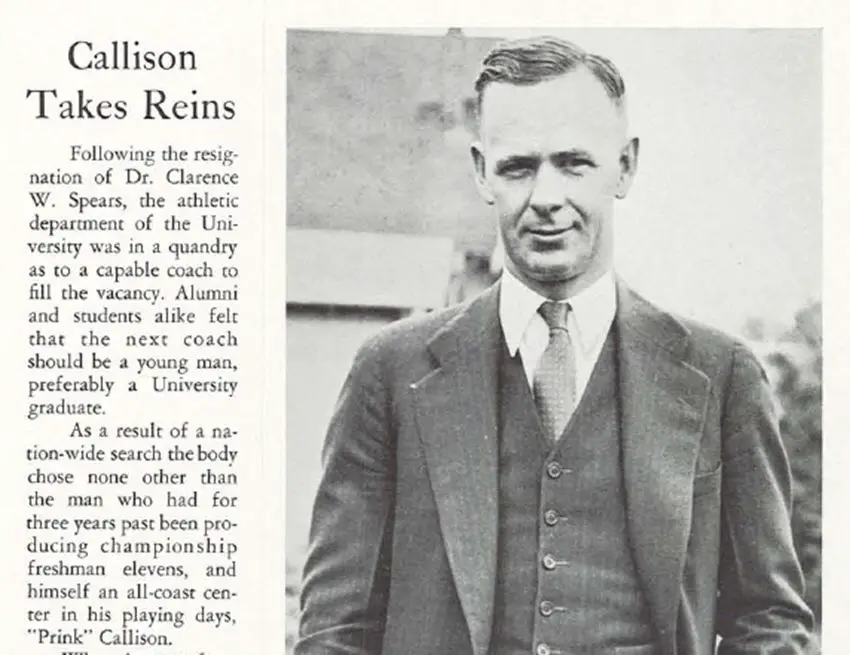
Prink Callison, the head coach for the Oregon Ducks.
The season opened on September 22nd with a rare night game against Linfield, where Oregon prevailed 53 to 0. Next up was Gonzaga (Yes, Gonzaga once fielded a football team), then Columbia (Portland University), Washington, Idaho, and UCLA. Oregon’s defense was dominant over this stretch, giving up only seven points total and notching five shut-outs in six games.
The undefeated Ducks would claim two more victories—against Utah and Oregon State—before seeing their winning streak come to an end with a 26-0 beating at the hands of USC in Los Angeles. The team’s final game would be against the St. Mary’s Gaels. This matchup was a Thanksgiving Day tradition from 1929 through 1934, with all games played at San Francisco’s Kezar Stadium. Oregon fans attending the game could buy a round trip train ticket from Eugene for less than $20.00.
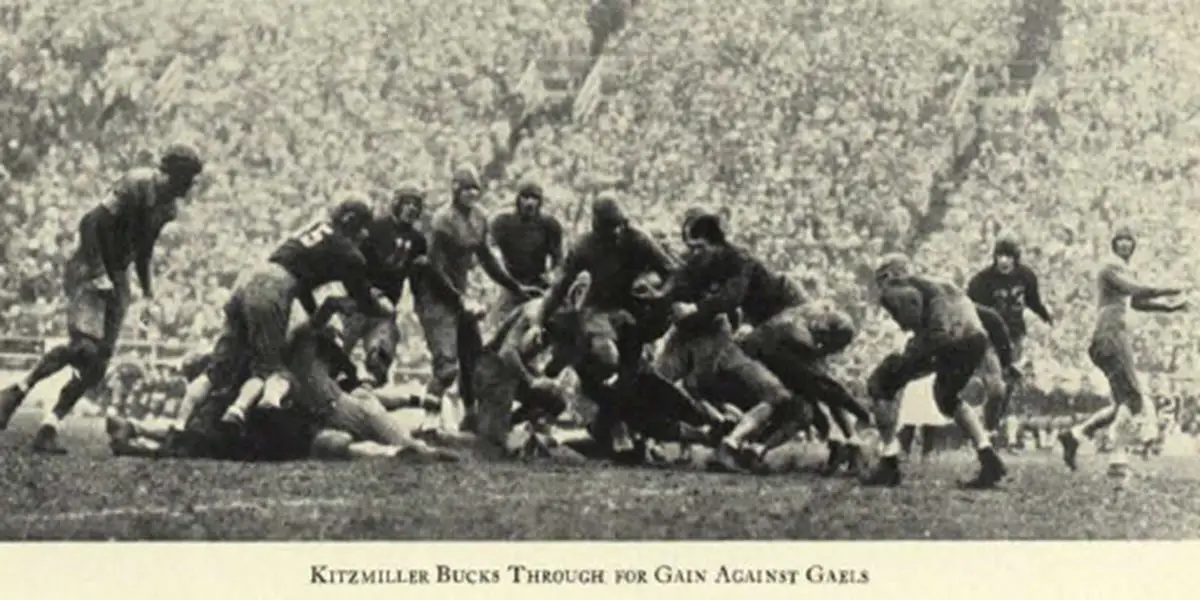
John Kitzmiller scores in a prior UO game vs St Mary’s.
Oregon finished the season in a first-place tie with Stanford as each had finished the season with 4-1 conference records. USC also had four wins and one loss, but also had a tie on their record, dropping them to third. Just as would later happen in 1948, the conference voted to send Stanford to the Rose Bowl and a 9-1 Oregon team was denied a bowl game.
The Ducks were justifiably proud to win nine games. Only once before had an Oregon team won that many games (1928), and no Duck team would win that many again until 60 years later in 1994. There were several individual stars on the 1933 team, including Mike Mikulak, who was named All-Pacific Coast Conference and would play in the 1934 College All-Star Game. Mikulak, Bree Cuppoletti, and Bernie Hughes were named to the East-West Shrine Game. Mikulak went on to play three seasons with the Chicago Cardinals before returning to Oregon as an assistant coach.
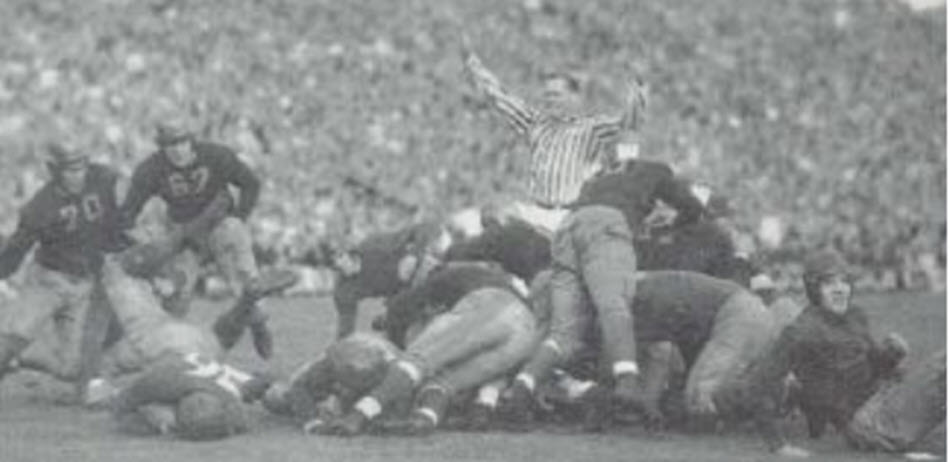
Mike Mikulak scores on Washington in 1933.
Years later, the Tip-Top 1933 National Rankings listed Oregon at No. 8 and were puzzled at why Stanford was voted as the conference representative to play in the Rose Bowl? Yes, Stanford beat USC (Oregon’s only loss), but Oregon beat Washington, and the Huskies beat Stanford. The tiebreaker should have been Stanford’s loss to a 1-5-2 Northwestern team, not Oregon’s loss to third-place USC. All this makes you wonder who voted against this great Oregon team?
Regardless, this squad is one of the great Oregon unknowns of the past, and Duck fans should appreciate the effort and fortitude this team displayed during one of the most difficult times in our nation’s history
Jim Maloney
Ellensburg, Washington
Top Photo by UO Photographic Collection

Brad Nye, the FishDuck.com Volunteer editor for this article, conserves land for Deschutes Land Trust in Central Oregon.
Related Articles:
Jim currently resides in Ellensburg, Washington where he has had the opportunity to watch former Ducks such as NaDerris Ward and Scott Grady play for Central Washington University, Jim’s alma mater. However, Jim was born in Eugene and attended Howard Elementary School, and what then called Colin Kelly Junior High School before moving to Washington. Jim began following the Ducks during the 1957 season and had the opportunity to watch a number of games at Hayward Field. Over the years, Jim has developed a wealth of knowledge about Oregon sports history. When not editing on Fanbase.com or working in his garden, Jim manages to find time to practice law.

